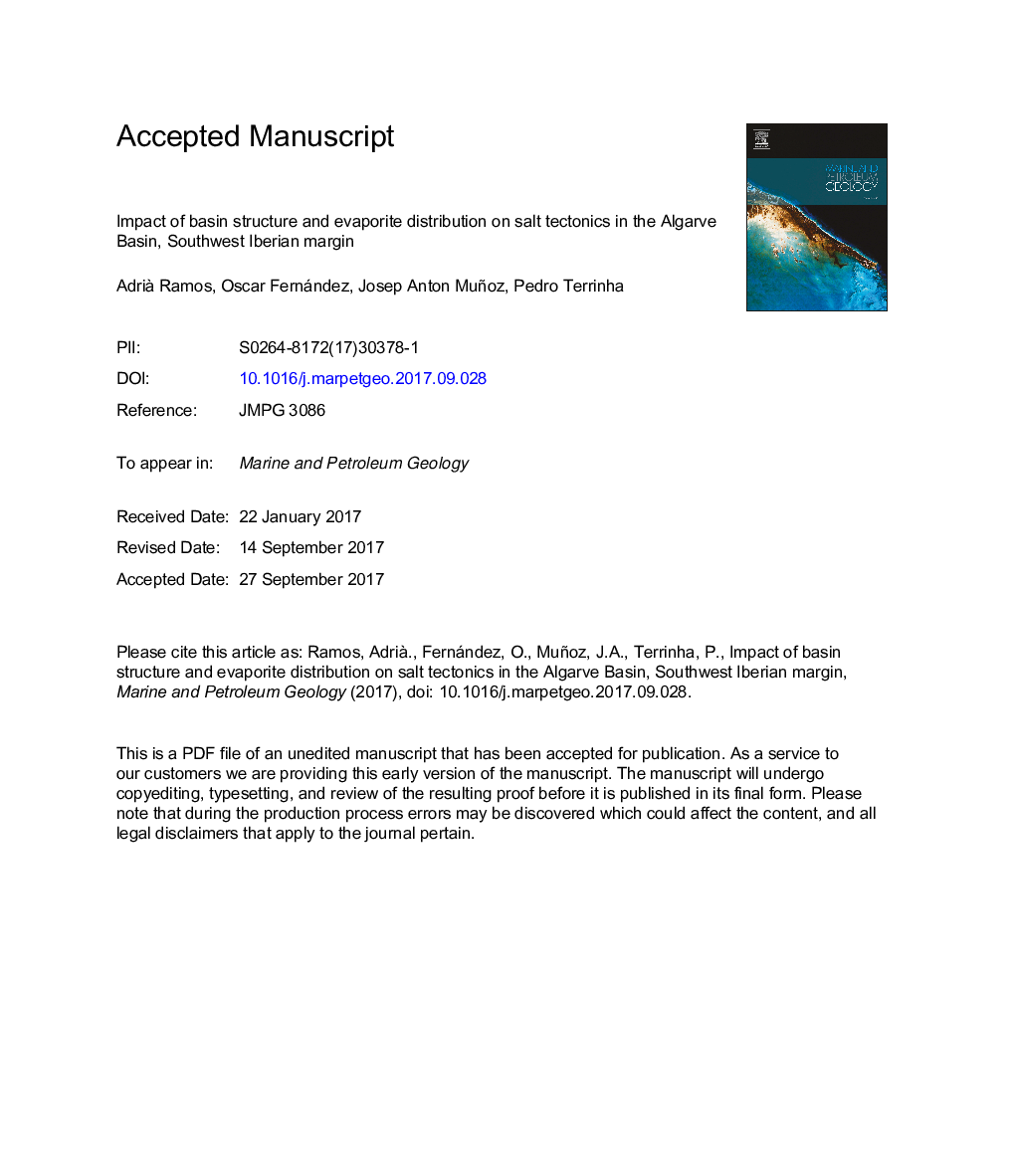| Article ID | Journal | Published Year | Pages | File Type |
|---|---|---|---|---|
| 5781948 | Marine and Petroleum Geology | 2017 | 57 Pages |
Abstract
The SW Iberian margin developed as a passive margin during Mesozoic times and was later inverted during the mainly Cenozoic Alpine orogeny. The initial syn-rift deposits include a Lower Jurassic evaporite unit of variable thickness. In the onshore, this unit is observed to thicken basinward (i.e., southward), in fault-controlled depocenters, and salt-related structures are only present in areas of thick initial evaporites. In the offshore, multiple salt-structures cored by the Lower Jurassic evaporites are interpreted on seismic reflection data and from exploratory drilling. Offshore salt structures include the allochthonous Esperança Salt Nappe, which extends over an area roughly 40Â ÃÂ 60Â km. The abundance of salt-related structures and their geometry is observed to be controlled by the distribution of evaporite facies, which is in turn controlled by the structure of rift-related faulting. This paper presents a comprehensive study of salt tectonics over the entire onshore and offshore SW Iberian passive margin (southern Portugal and Gulf of Cadiz), covering all aspects from initial evaporite composition and thickness to the evolution of salt-related structures through Mesozoic extension and Cenozoic basin inversion.
Related Topics
Physical Sciences and Engineering
Earth and Planetary Sciences
Economic Geology
Authors
Adrià Ramos, Oscar Fernández, Josep Anton Muñoz, Pedro Terrinha,
